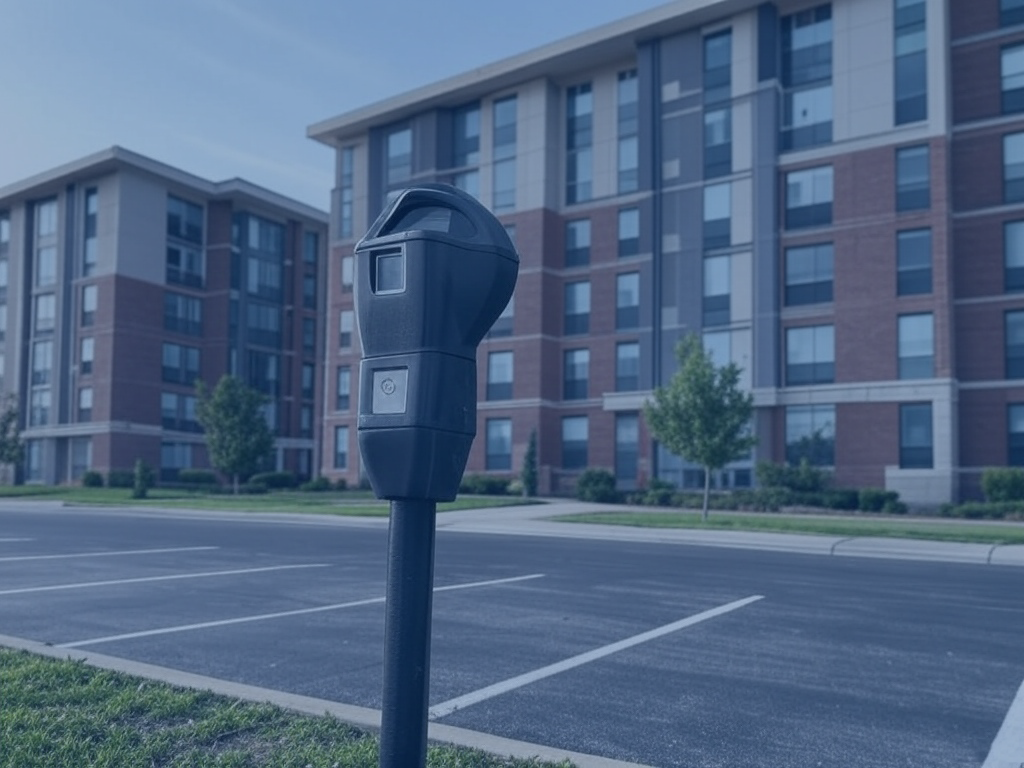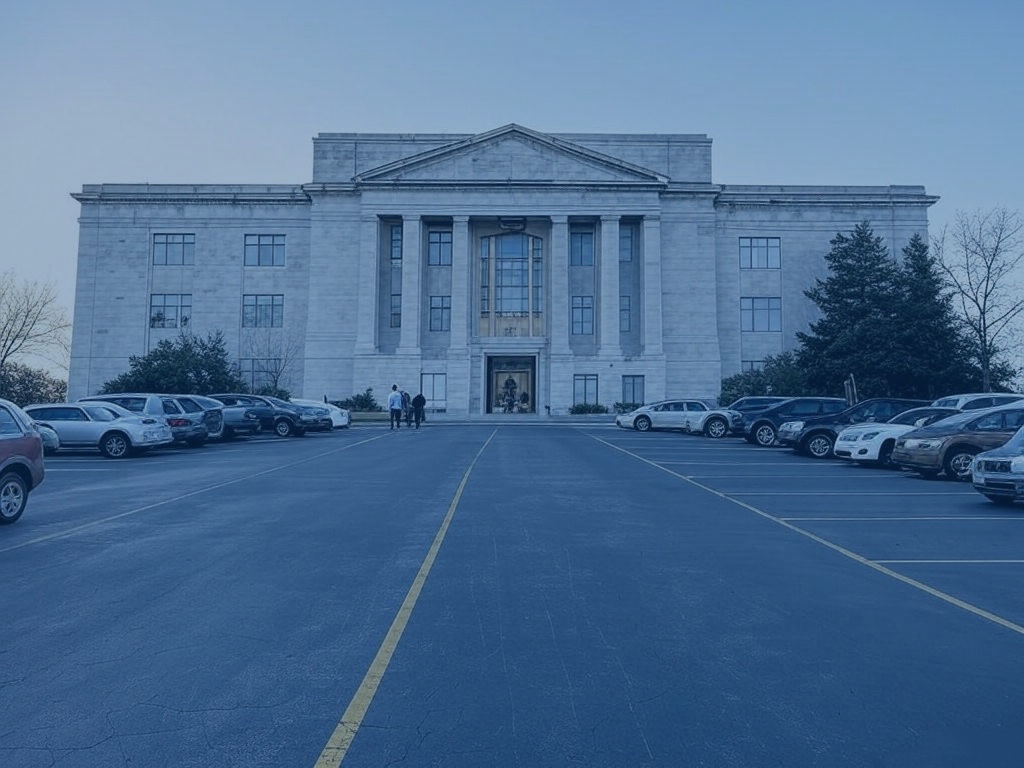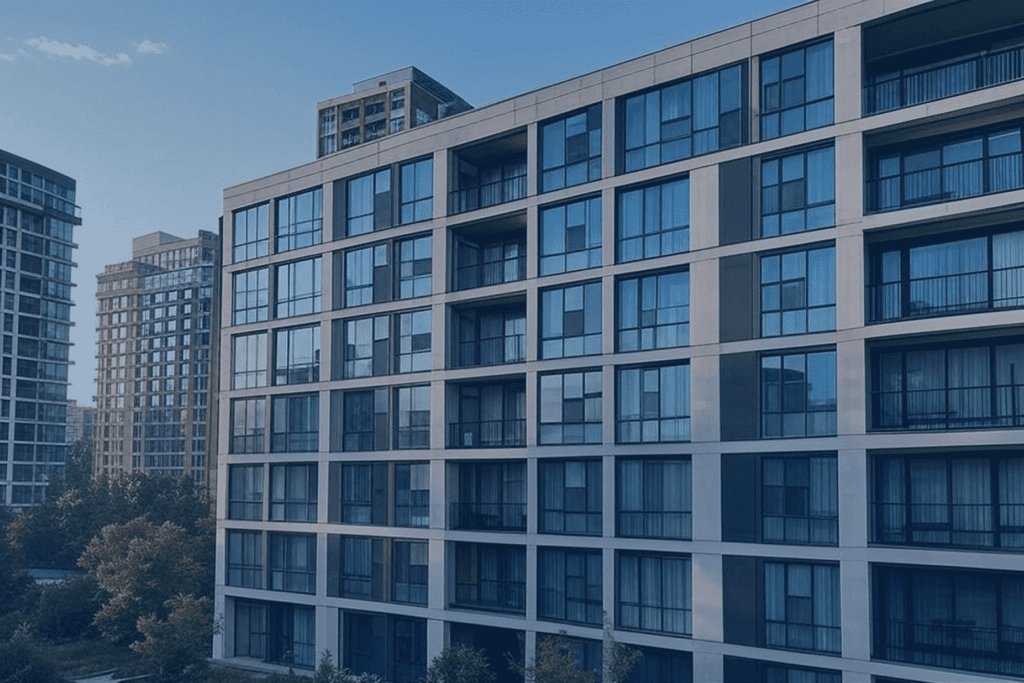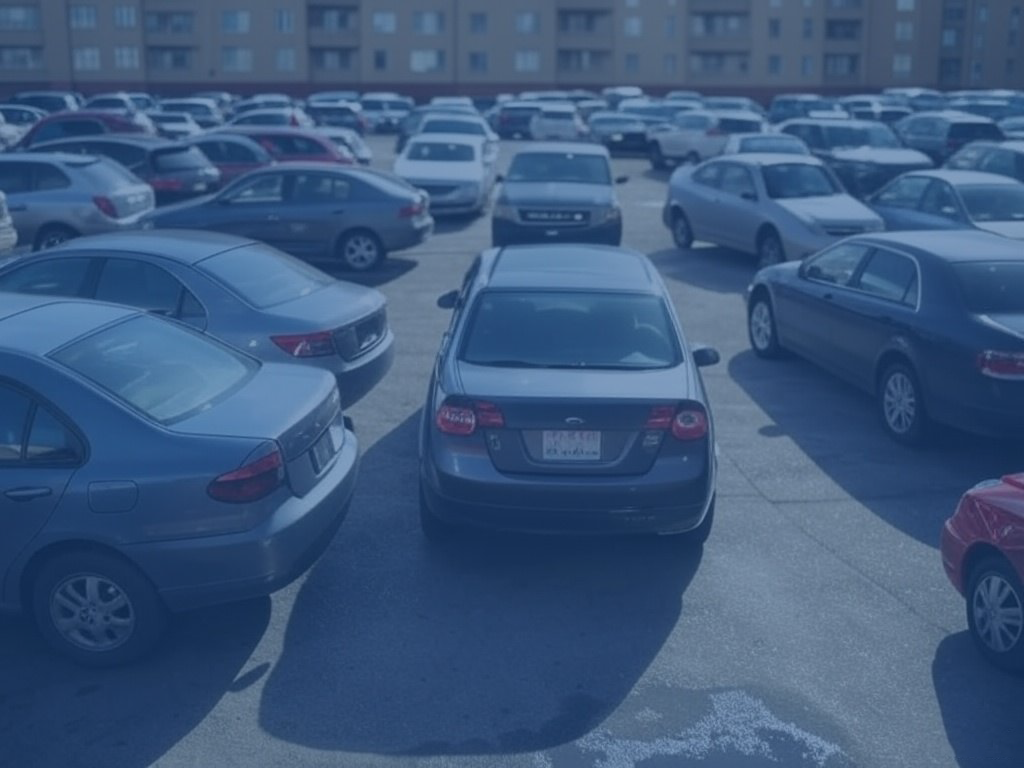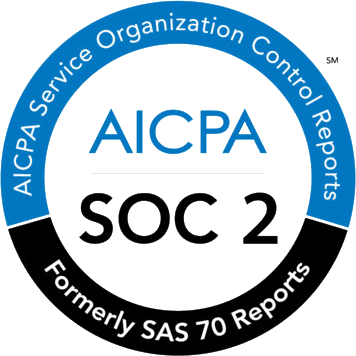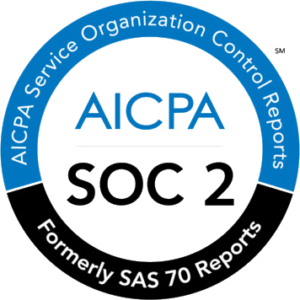Modern living conditions, particularly in urban areas, often involve apartment-style housing. As more individuals and families live in multifamily housing, challenges with apartment parking come to the fore. This article addresses apartment parking dilemmas and discusses practical, tech-driven solutions which not only increase space efficiency but potentially offer new revenue opportunities for property managers.
Table of Contents
ToggleIntroduction
In the bustling cityscape, where modern living often mandates compact apartment-style housing, one challenge consistently surfaces: apartment parking. As the skyscrapers grow taller and living quarters reduce in size, the parking lots remain stubbornly resistant to change, much to the dismay of urban dwellers. But what if we could rethink this dilemma? What if, instead of succumbing to parking woes, we could transform them into opportunities? This article aims to delve deep into the labyrinth of apartment parking challenges and light the way with innovative, technology-driven solutions.
From residents grappling with the scarcity of slots to potential renters making decisions based on available parking facilities, parking dynamics are increasingly influencing multifamily living. Far from being just an amenity, it has the potential to drive tenant satisfaction, increase property value, and even open up enticing revenue opportunities. Is your interest piqued? Let’s park the introduction here and drive straight into the crux of the matter, for when it comes to apartment parking, every inch and innovation counts.
The Apartment Parking Dilemma
Parking, particularly in apartment complexes found in urban environments, often consists of a labyrinth-like parking structure or a limited number of slots within a crowded lot. Residents frequently grapple with problems stemming from insufficient parking spaces, issues with guest parking, and the inherent disorder of first-come, first-serve models of allocation. These challenges often result in daily frustration, making a task as simple as parking one’s vehicle an exercise in anxiety-inducing strategy.
Data from a 2019 study conducted by Parkopedia found that, on average, city dwellers spend about 15 minutes looking for an apartment parking spot. This everyday struggle not only elevates stress among residents but significantly impacts the time they could better spend elsewhere.
Further complicating the matter is guest parking. Exclusively designating certain slots for guests is often impractical due to limited space. Consequently, residents are sometimes relegated to playing an impromptu game of Tetris — strategizing and reshuffling cars, considering variables like their own schedules and those of transient guests.
Finally, the inefficiency of the traditional first-come-first-serve models adds another layer of complexity. This system, devoid of any monitoring mechanism, is often marred by instances of spot-poaching and misuse of assigned spaces. A comprehensive survey by the National Apartment Association paints a grim picture: nearly 50% of apartment residents cited parking issues as a significant factor affecting their decision to renew leases.
In sum, the multifaceted apartment parking dilemma raises a critical question: how can we rethink and streamline this essential aspect of apartment living, making it a less stressful and more effective process for all involved? To provide an answer, we must look beyond traditional strategies and towards innovative, tech-driven solutions.
How Outdated Apartment Parking Policies Create Problems
The roots of modern apartment parking woes often trace back to traditional parking policies. These older systems typically do not account for the dynamics of the modern urban lifestyle, where each resident potentially owns more than one vehicle.
Key Issues with Current Policies
- Overselling Spots:
- Creates a parking roulette where residents might come home late and find no available spots.
- Fosters tension among residents, contrary to the comfort that apartments aim to provide.
- Outdated Permit Systems:
- Leads to administrative complications.
- Fails to accommodate variability in parking needs, such as visitors, emergencies, or residents with shift-based work schedules.
Impact on Satisfaction
- Tenant Satisfaction:
- According to NMHC data, parking availability significantly influences tenant satisfaction.
- Dissatisfaction often stems from wasted time due to circling for spots or navigating complex permit systems.
Challenges for Property Managers
- Increased Workload:
- Managers face extra challenges dealing with parking-related disputes, adding to their already busy schedules.
The Bigger Picture
- Retention and Financial Impact:
- NMHC insights highlight parking issues as a key factor influencing tenant retention.
- Addressing parking problems is essential as happy residents lead to higher retention rates, ultimately benefiting the property manager’s bottom line.
By addressing these outdated policies, property managers can foster a more harmonious and efficient living environment, significantly impacting tenant satisfaction and retention.
The Role of Smart Parking in Multifamily Apartments
In an era where technology drives innovative solutions, the concept of ‘smart parking’ is commandeering attention. Distinct from traditional parking methods, smart parking leverages digital reservations, automated access control, and real-time space tracking to mitigate most, if not all, apartment parking issues.
Digital reservation systems provide residents with the convenience of booking parking spots, eliminating the fracas of “first come, first serve.” This system also conveniently addresses guest parking issues, allowing residents to reserve spots for their guests in advance.
Automated access control equips managers with the ability to supervise parking effectively. By automating the entry and exit of vehicles, managers can maintain accurate records of vehicle movement, prevent unauthorized use of spaces, and potentially identify renters who are consistently misusing or dominating shared parking resources.
Finally, imagine a scenario where residents can easily view available parking spots in real-time, without having to drive around the block multiple times just to find a space. Real-time space tracking makes this possible. It reduces parking stress for residents and streamlines space management for proprietors.
According to the Department of Transportation, as much as 30% of traffic in urban areas is caused by drivers searching for a parking spot. Smart parking significantly reduces this percentage, ultimately curating a more seamless and sustainable urban living environment.
Thus, the role of smart parking is transformative in multifamily housing settings. By addressing the conventional parking problems head-on through technology, smart parking brings a fresh breath to these spaces, contributing to a hassle-free resident experience and efficient management.
A Win-Win for Property Managers & Residents
Making apartment parking more efficient is not just about maximizing space—it’s about boosting tenant satisfaction and making management easier for those in charge. Happy residents are the backbone of successful multifamily housing, and tending to something as seemingly mundane as parking can contribute significantly towards that cause.
Enhancing Resident Experience
- Eliminating Parking Stress: Imagine a situation where residents don’t have to nervously look around for free parking spots after a long day at work.
- Pre-Booking Convenience: With smart parking, tenants can pre-book their spots and have immediate access upon arrival.
- Reducing Conflicts: No more disputes over spots or the annoyance of a guest not finding a parking space.
This is a simple yet effective way to enhance the resident living experience, and it all hinges on better parking management.
Benefits for Property Managers
- Reducing Administrative Burden: Traditionally, property managers spend valuable time manually supervising parking, handling disputes, and tracking down parking fee defaulters.
- Automating Processes: A smart parking solution can automate much of this, allowing managers to focus on other essential tasks, thus boosting their productivity.
- Track & Solve Issues: Technology-driven methods keep track of who is parking where and when, making it easier to identify and solve issues before they escalate.
Revenue Opportunities
- Rental of Vacant Spots: Vacant spots can be rented out to non-residents, unlocking potential additional income.
- Dynamic Pricing: Implementing dynamic pricing during peak hours or special events allows for even greater revenue potential.
By including smart parking as a part of a multifamily housing solution, a better resident experience and streamlined administration are just the beginning. The cherry on top? It could just be the ensuing financial profit.
For more information on how this could work for your property management, take a look at Wayleadr’s multifamily parking software.
Simple Steps to Improve Apartment Parking Without Major Renovations
If the idea of major infrastructure upheavals gives you the shivers, you can rest easy. With innovative technology at your disposal, it’s perfectly feasible to enhance your apartment’s parking system without going in for a full-blown renovation. Here, we detail steps that can help you make the most of what you’ve got, maximizing efficiency and satisfaction levels for all involved.
Step One begins with the implementation of smart parking systems. With digital reservations platforms, residents can book their parking spaces in advance, ensuring that they always have a spot waiting for them when they come home. No more evenings spent in a frustrating hunt for parking. Just hop online, reserve, and rest easy. It’s a simple, sustainable solution to combat parking mayhem without the need to physically modify the existing layout. That’s a win, right?
Next up, consider substituting your traditional parking permit system with an automated access control system. With this technology, managers can regulate who enters and exits the parking area, reducing unauthorized use and optimizing space usage. Automated access control systems can be incorporated using devices that most of your residents already possess, like smartphones. No large hardware required, merely a software update and some creativity.
To make the most of your parking space without picking up the sledgehammer, consider the use of real-time space tracking. With sensors placed at each parking spot, residents can log into a user-friendly app to determine where empty spaces are. This not only eliminates the frustrating search for a parking spot but also maximizes the efficient use of your available spaces.
Finally, don’t underrate the potential of efficient parking management. Using the right software can reduce the burden on administrative staff, helping them to manage parking Waitlists, move-outs, and parking renewals more accurately and efficiently.
In reality, architecting a more streamlined parking experience needs no major renovations. With smart technology, we can improve existing systems, maximizing space usage, convenience, and satisfaction. To learn more about replacing traditional parking permit systems with digital solutions, take a look at Wayleadr’s digital apartment parking permits for a deep dive. Technology might not be able to create more parking spaces, but it can sure make it feel like it did! Who said you can’t squeeze more out of less?
Conclusion
In our exploration of the apartment parking dilemma, it’s clear that traditional approaches and policies often don’t cut it in today’s high-density living situations. We’ve delved into the challenges of lack of parking spaces, guest parking issues and the inherent unfairness of first-come-first-serve models. Old-school parking permit systems and the problem of overselling spots only make matters worse, negatively impacting tenant satisfaction.
The good news is, this stark portrait paints a compelling case for change, specifically the move toward smart parking in multifamily housing. With technology-driven solutions like digital reservations, automated access control, and real-time space tracking, many of the aforementioned predicaments can be effectively tackled. Through innovation, we can smoothen out the rough edges in apartment parking experiences.
Not only do residents stand to benefit from this shift—the wins for property managers are considerable too. Increased tenant satisfaction, reduced administrative burden, and the potential of new revenue opportunities from better optimized parking systems. These aren’t just conceptual perks. They’re tangible advantages that come from reimagining apartment parking scenarios.
Moreover, implementing these improvements doesn’t necessitate large-scale revamps or costly renovations. The enhancement of parking management systems can be as straightforward as replacing traditional parking permits with smart solutions that maximize the utility of existing spaces.
Given the many upsides, it’s both a practical and prudent move for property managers to invest in smarter parking options. By doing so, they’re not just addressing a persistent pain point but creating a win-win scenario that drives both resident satisfaction and revenue. Becoming a part of the solution to the apartment parking conundrum is undeniably a road worth taking.

